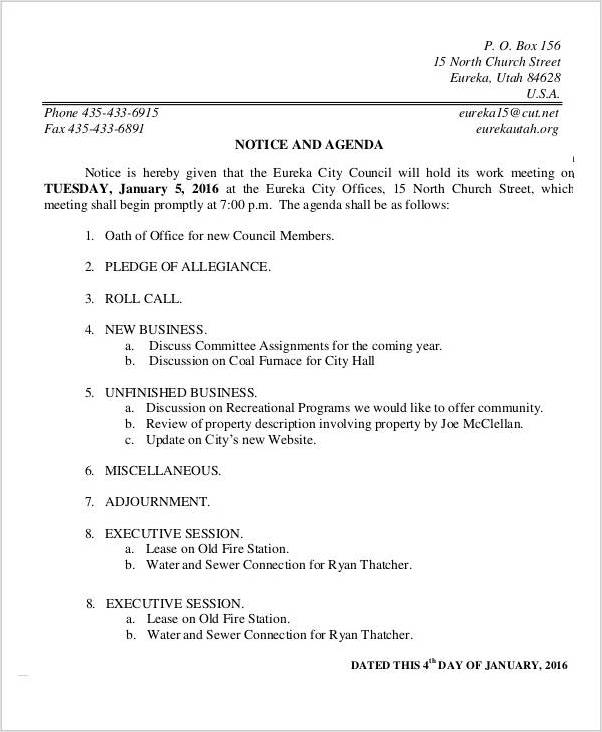A work meeting agenda is a document that outlines the topics and activities to be discussed during a scheduled meeting. It serves as a roadmap for the meeting, ensuring that participants stay focused and on track. The agenda typically includes the meeting’s objectives, a list of topics to be covered, and the allotted time for each item. A well-structured agenda is essential for productive and efficient meetings, helping to maximize the use of time and resources.
Why Do You Need a Work Meeting Agenda?
Having a work meeting agenda is crucial for several reasons:
- Organization: An agenda provides structure to the meeting, ensuring that topics are discussed in a logical order. It helps avoid confusion and keeps participants on the same page.
- Time Management: With a clear agenda, participants can allocate the appropriate amount of time to each topic. This prevents meetings from running over the scheduled time and ensures that all important items are addressed.
- Focus: A well-defined agenda helps keep discussions on track and prevents participants from veering off-topic. It serves as a reminder of the meeting’s purpose and encourages everyone to stay focused and engaged.
- Preparation: Sharing the agenda in advance allows participants to come prepared with any necessary information, data, or materials. This ensures that discussions are more informed and productive.
- Accountability: By documenting the meeting’s objectives and topics, the agenda holds participants accountable for their responsibilities and commitments. It serves as a reference point for tracking progress and follow-up actions.
How to Create an Effective Work Meeting Agenda
Here are some key steps to follow when creating a work meeting agenda:
1. Define the Meeting Objectives
Start by clearly defining the purpose of the meeting. What do you hope to achieve or discuss? Are there any specific outcomes you are aiming for? Defining the objectives sets the tone for the meeting and ensures that everyone is aligned with its purpose.
2. Identify the Topics to be Discussed
List all the topics that need to be covered during the meeting. Be specific and ensure that each item is relevant to the objectives. Prioritize the topics based on their importance and consider the time required for each.
3. Allocate Time for Each Topic
Determine the amount of time that should be dedicated to each topic. This will help you create a realistic agenda that fits within the meeting’s scheduled duration. Consider the complexity of the topic and the level of discussion required.
4. Provide Background Information
For each topic, provide a brief description or background information to give participants context and help them prepare. Include any relevant documents, reports, or data that attendees may need to review beforehand.
5. Include Any Required Actions or Decisions
If some specific actions or decisions need to be made during the meeting, clearly outline them in the agenda. This ensures that participants are aware of their responsibilities and can come prepared with any necessary information or proposals.
6. Send the Agenda in Advance
Share the agenda with all participants at least 24 hours before the meeting. This gives them enough time to review the topics, gather any required information, and come prepared. It also allows attendees to suggest any additional agenda items if necessary.
7. Review and Adjust if Needed
Before the meeting, review the agenda to ensure it is well-structured and covers all necessary topics. Make any adjustments or additions as needed. It’s important to be flexible and adapt the agenda to accommodate unexpected changes or new information.
8. Follow the Agenda During the Meeting
Once the meeting starts, use the agenda as a guide to keep the discussion on track. Assign a facilitator or moderator to ensure that each topic is covered within the allocated time. Encourage active participation and engagement from all attendees.
Sample Work Meeting Agenda
Here’s an example of a well-structured work meeting agenda:
- Meeting Date: [Date]
- Meeting Time: [Time]
- Location: [Location]
1. Welcome and Introductions (5 minutes)
Begin the meeting by welcoming all participants and introducing any new members. This helps create a positive and inclusive atmosphere.
2. Review of Previous Meeting Minutes (10 minutes)
Take a few minutes to review the minutes from the previous meeting. Discuss any outstanding action items or decisions that need to be addressed.
3. Project Updates (30 minutes)
Provide updates on ongoing projects, including milestones achieved, challenges faced, and upcoming deadlines. Allow for discussions or questions related to each project.
4. New Business (45 minutes)
Allocate time to discuss any new business or topics that require attention. This could include upcoming events, new initiatives, or any pressing issues that need resolution.
5. Team Feedback and Suggestions (15 minutes)
Encourage team members to provide feedback, suggestions, or ideas for improvement. Create an open and supportive environment for sharing thoughts and concerns.
6. Action Items and Next Steps (10 minutes)
Summarize the key action items and decisions made during the meeting. Assign responsibilities and set deadlines for each item. Ensure that all participants are clear on their next steps.
7. Wrap-up and Adjournment (5 minutes)
End the meeting by summarizing the main discussions and thanking everyone for their participation. Confirm the date and time of the next meeting, if applicable.
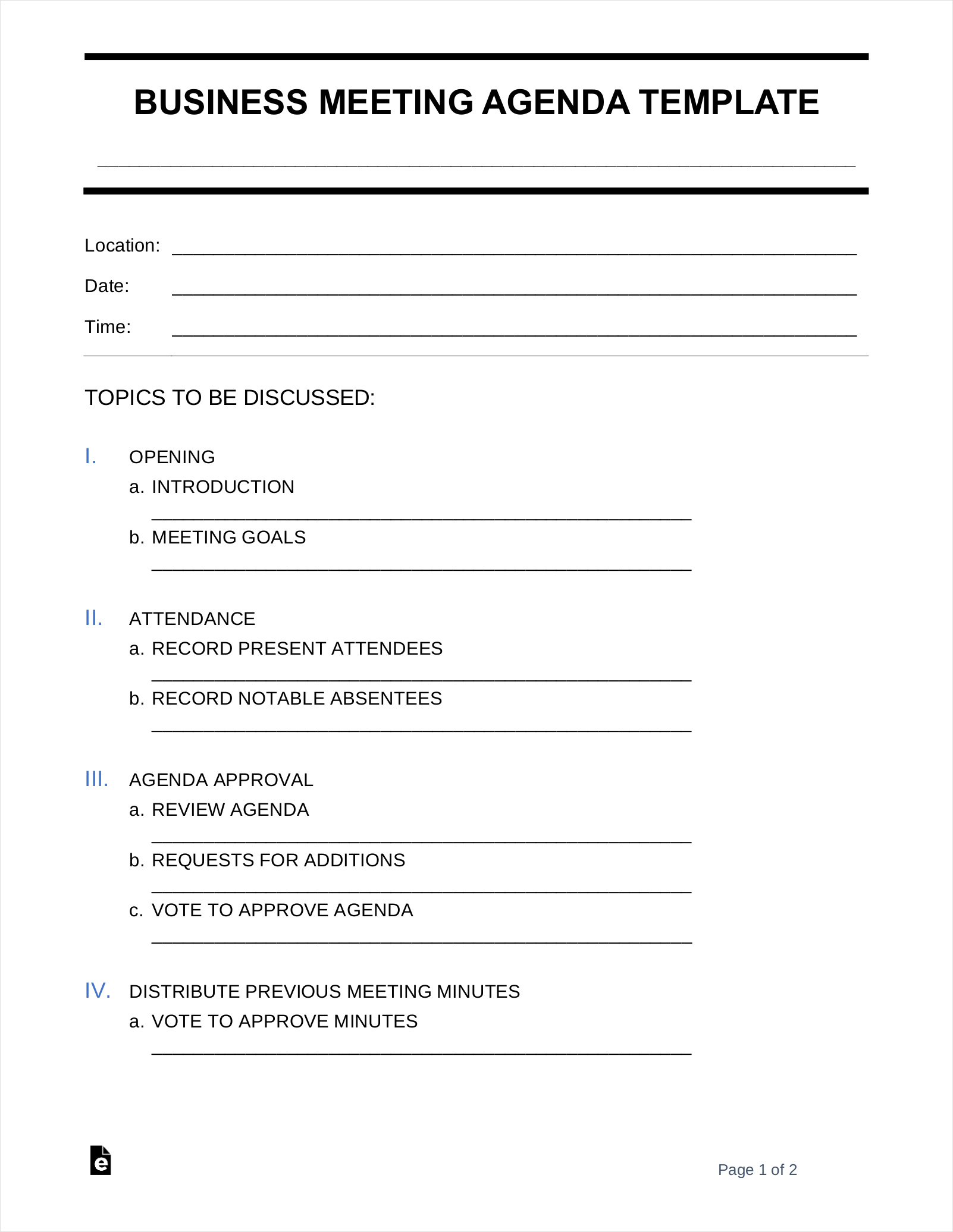
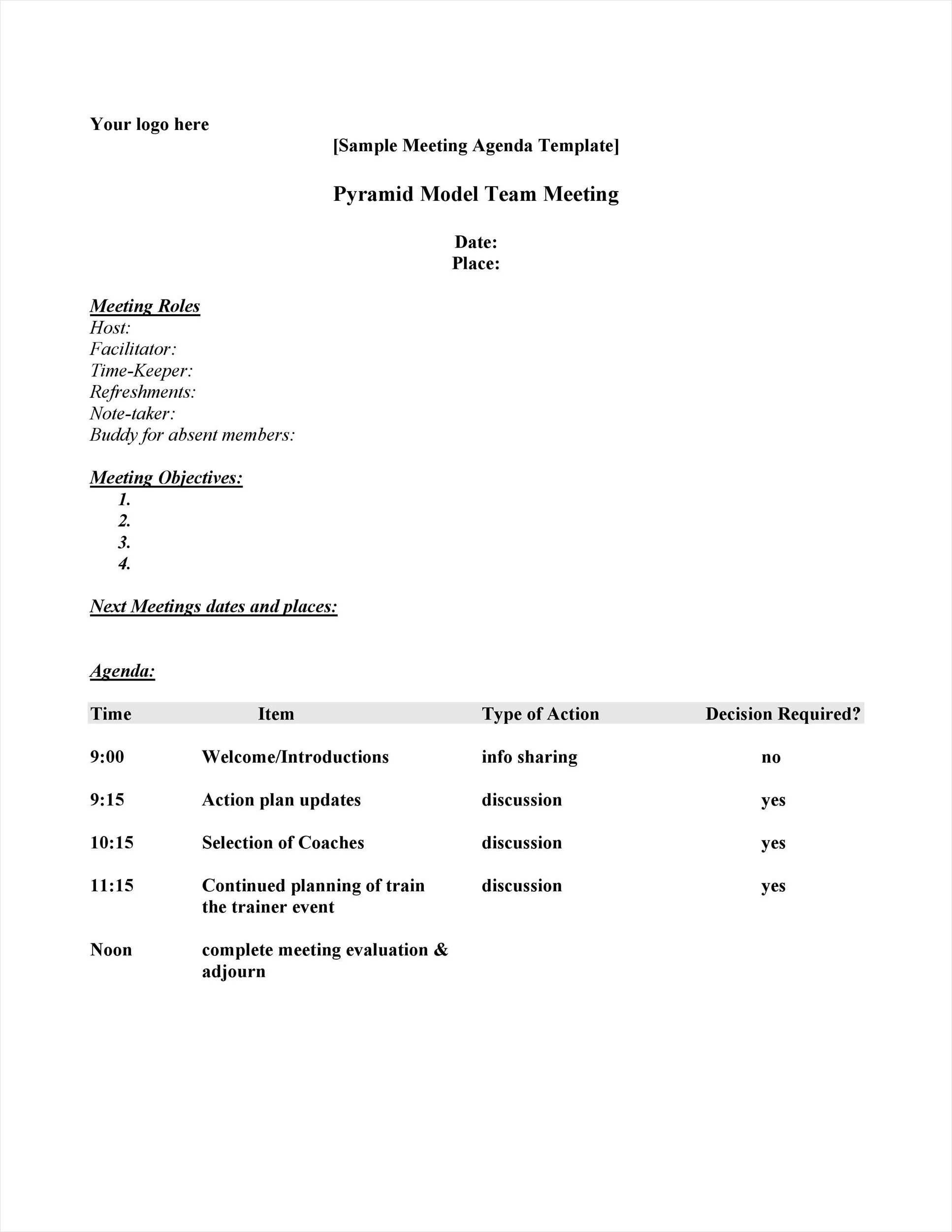
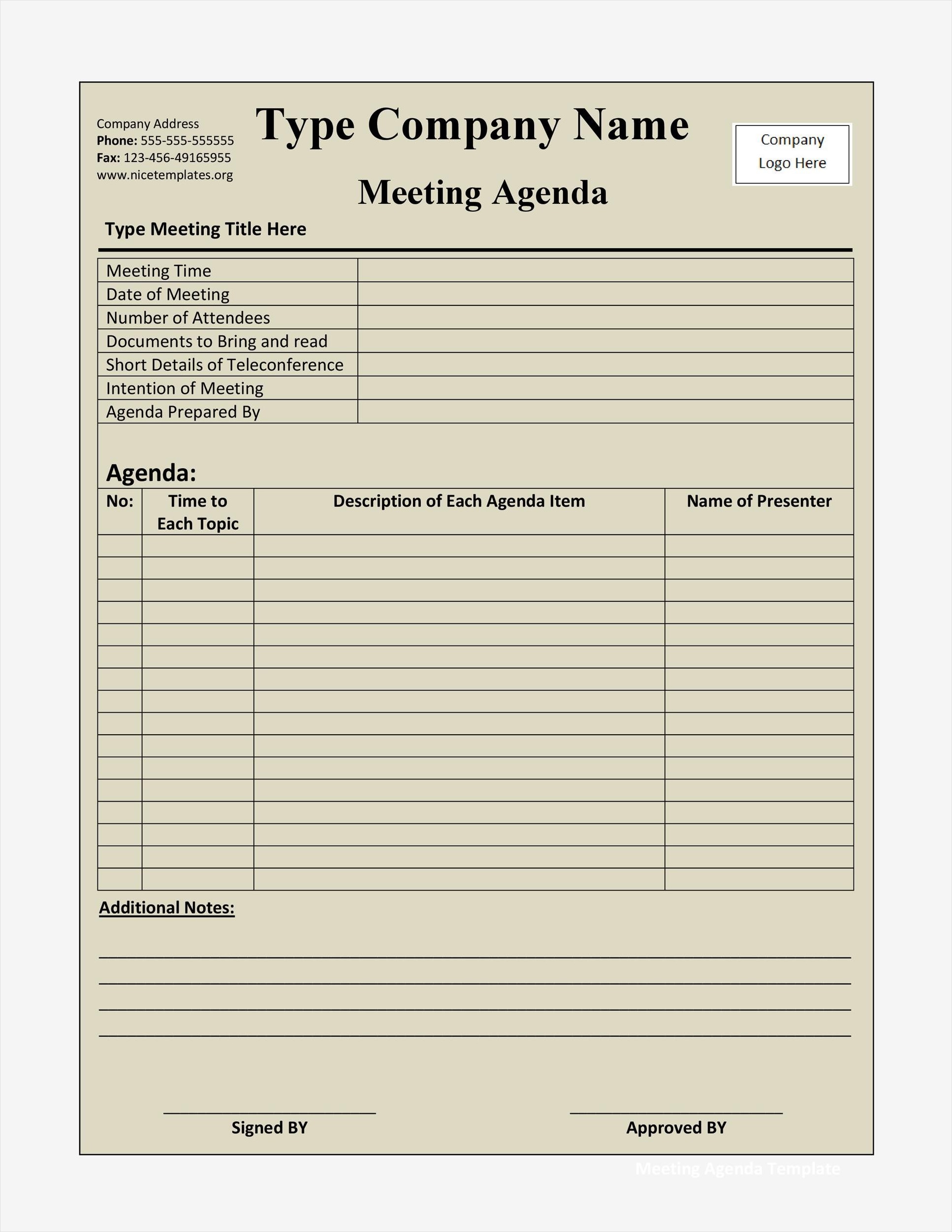
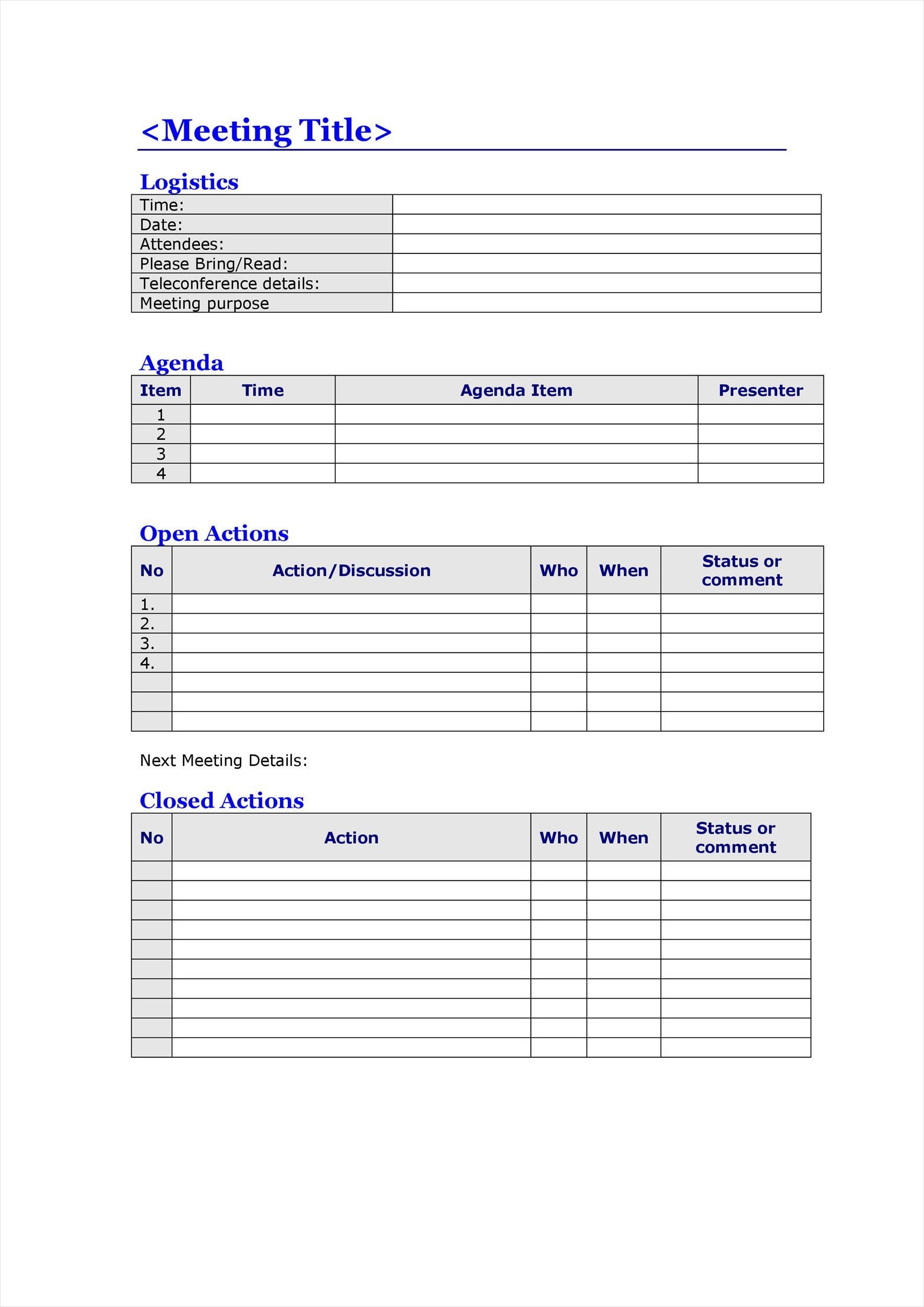
Conclusion
A well-structured work meeting agenda is essential for productive and efficient meetings. It helps maintain focus, ensures time is used effectively, and provides a roadmap for discussions. By following the steps outlined in this article, you can create an effective agenda that leads to more successful and meaningful meetings.
Work Meeting Agenda Template Excel – Download
